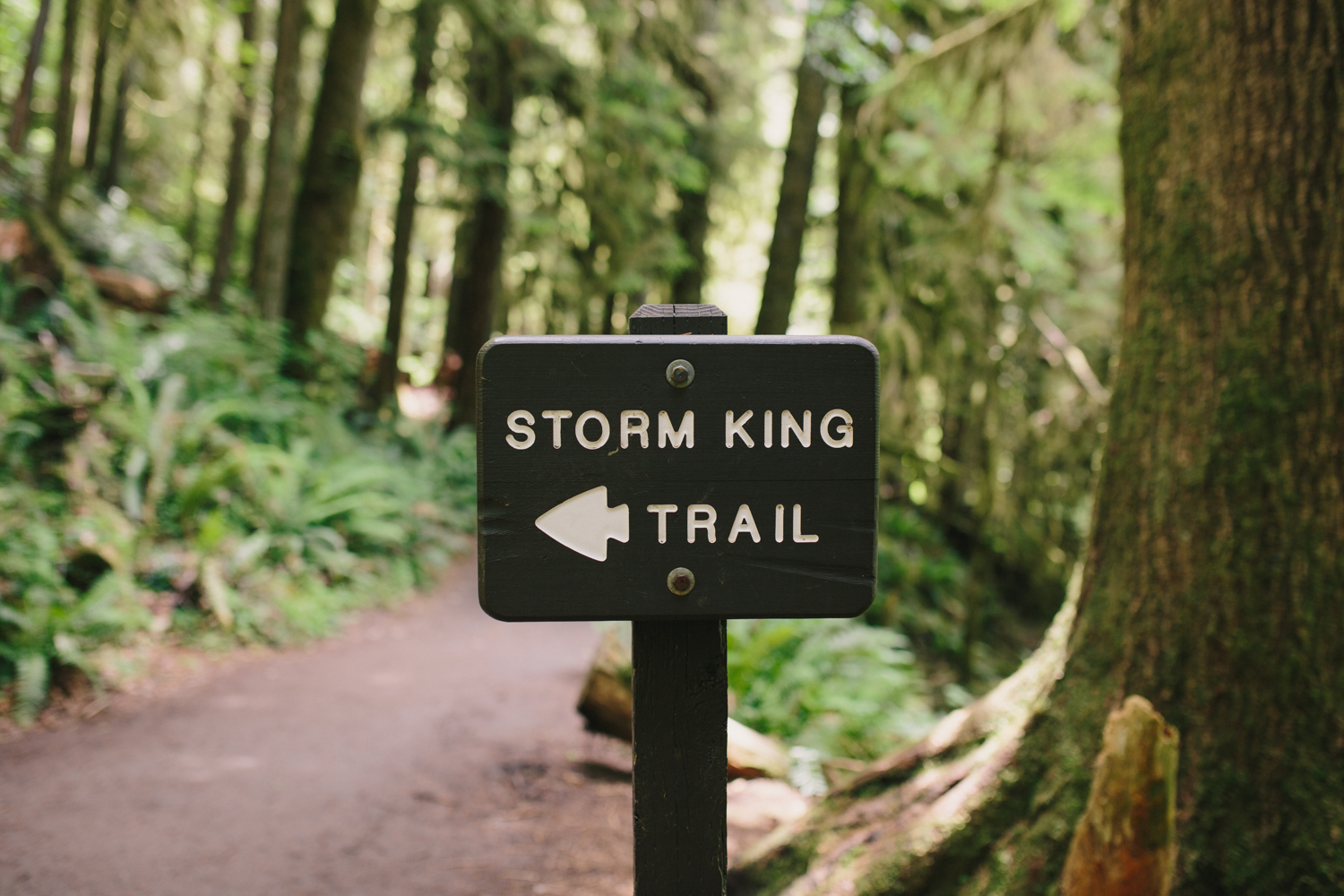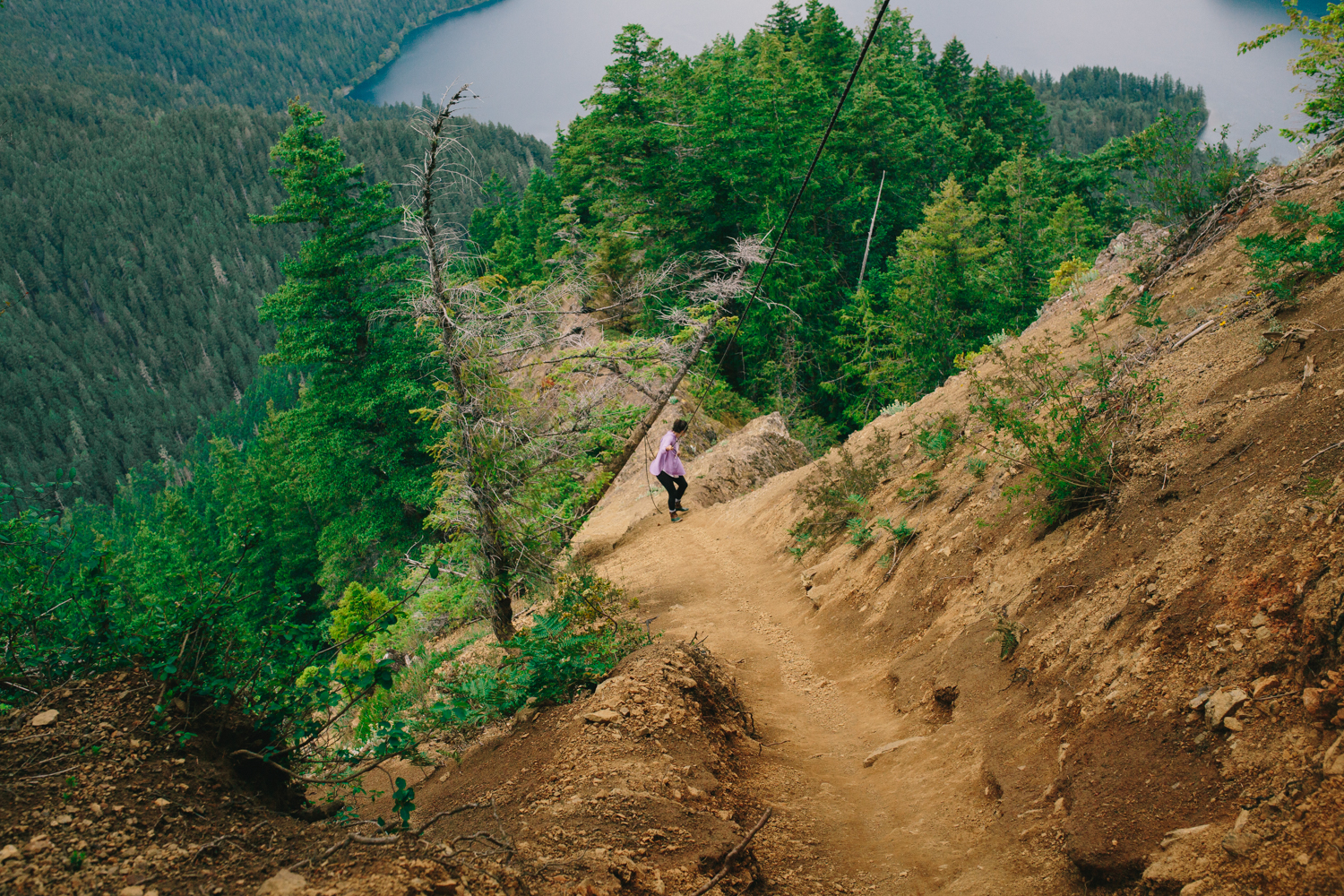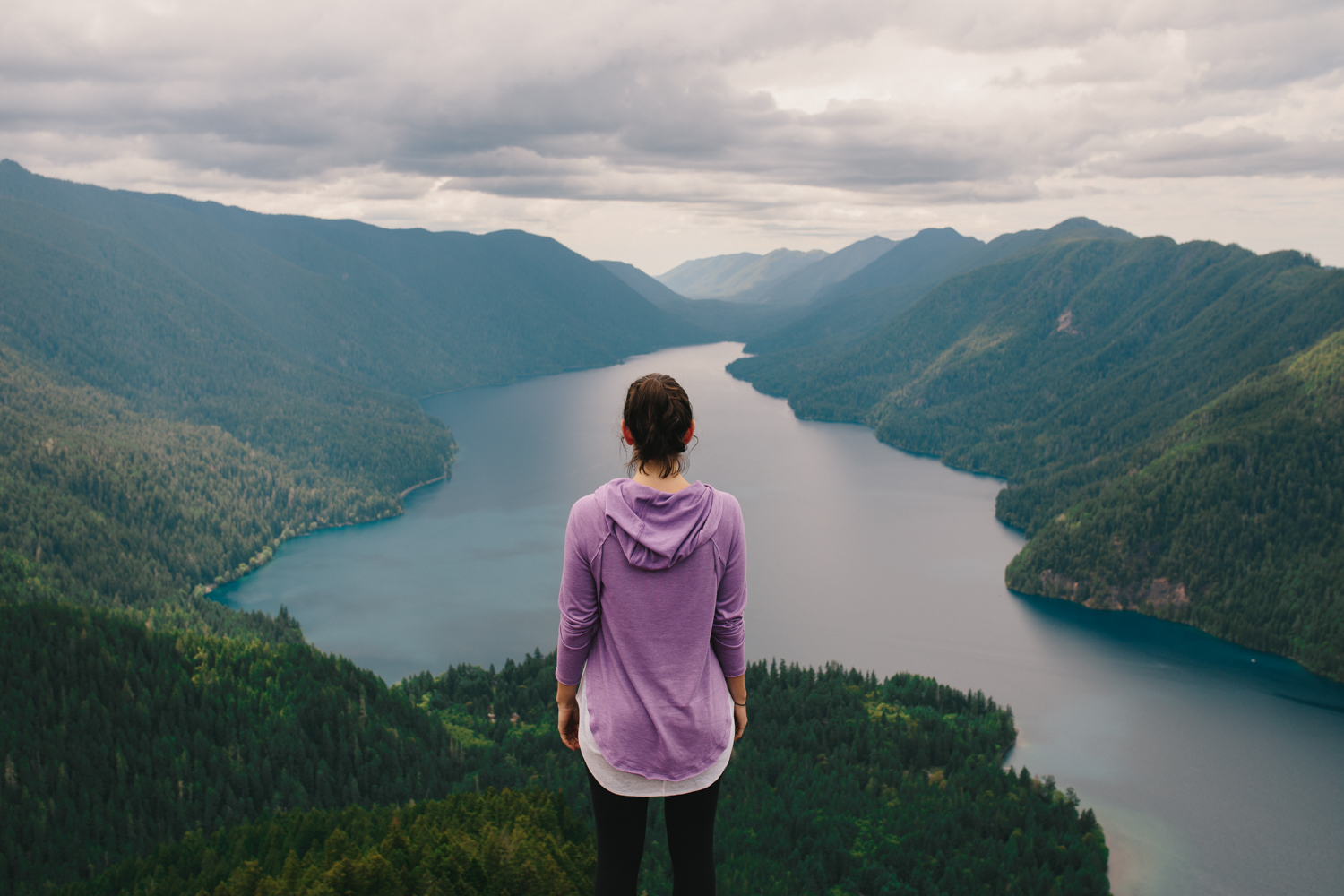My wife and I are new to hiking. While our sore backs and legs are prominent reminders of our inexperience, we’ve enjoyed approaching something with a beginner’s mind. Every climb offers us a new insight. Each huff and puff on a steep ascent shows us something new about ourselves and about the amazing world in which we find ourselves. The joys of self-discovery are near ubiquitous on the trail, and brief moments of shared rest in conversation with other hikers are reminders of the world’s wonder and beauty.
One thing we’ve learned is something I’ll call the “downhill mentality.” So far, most of the hikes we’ve done have been short and steep. Grueling climbs to picturesque views, with enough danger along the way to override our fatigued bodies with manic bursts of adrenaline. That’s our sweet spot. The funny thing is, it always feels like it takes us four or five times as long to go up as it does to come down. Our journey to the top is filled with the heavy breaths of uncertainty, hiding our self-doubt under the guise of water breaks. “Are we sure this trail is only 4 miles round-trip?” we ask ourselves. “Surely that is not the top of this hike, right?”
Mount Storm King provided this lesson with punishing potency on the date of our two-year wedding anniversary. Located in Olympic National Park, the Mount Storm King trail is a short, relentless climb with a deceptively simple opening. Just past the small, wildflower laden parking lot, we’re confronted by a reassuring sign: Marymere Falls is less than a mile ahead. An older couple walked by, on the way to the spot where his father proposed to his mother, their open-toed shoes a confirmation of everything we’d heard. Marymere Falls was an easy, flat hike open to people of all ages and abilities. Open-toed shoes weren’t going to cut it for where we're headed.

About three-quarters of the way to the falls, we find what we’re looking for. Storm King Trail. The sign’s left arrow points away from our flat path, into a massive boulder that hides the beginning of our steep ascent. It’s roughly two miles to the top, gaining 1700 feet in elevation over the first 1.4 miles (which “feels like three” according to the trail guide), and for the first 20 minutes or so, we see no one. The sound of camera shutters and jovial conversation is replaced by the loudness of our breath, and the fading crush of Marymere Falls. When we do finally pass some people on their way down, we don’t get the reassurance we’re hoping for: “Did you guys make it to the top?” we ask. “Not quite! But we did get a beautiful view of Lake Crescent.” Luckily, I think to myself, that dude had a toddler strapped to his back and his wife was about five months pregnant.
A lifetime passes, and we finally run into a confidence booster: a woman in her fifties with the hiking poles and outfit of a professional. We ask her the same question, to which she responds: “I turned around when I got to the rope assist."
Uh oh.
The guide didn’t say anything about a rope assist. In time, we’d learn that the rope assist was past the documented end of the trail, but we kept climbing, more uncertain than ever. Usually, we’d hear things like “totally worth it!” or “the views were amazing!” but so far, no one we passed had made it all the way up. Another lifetime passes, and we find a family having lunch at the advertised end of the trail. They share a few jokes about the grumpy people they passed, and tell us they’re just taking a break. Once we do find the rope, we’re comforted by a couple from Germany around our age, who tell us in admirable English how amazing the summit is. We navigate the rope, round a few dizzying, narrow corners, and reach another rope! No one told us there were two ropes, but this one is less sketchy (albeit longer), and we make quick work of it.

Finally, the naivety of our early optimism long dead, our clean, dry bodies traded for sweat soaked, dirty wild things, we can see the summit. The end of our arduous climb is in sight. Suddenly we don’t feel so tired. Legs that were ready to call it quits start pumping full steam again, honoring the claims to the benefits of youth and mobility that we keep reading about and ignoring. A quick scramble up a rocky grade, and we’re done. Sweeping panoramic views of Lake Crescent (and our tiny parking lot) are our reward, and the eyes we see them with are not the same eyes that started the trail.

Then we head down. The rocks and hardened roots of the trail feel soft; the steep grade is no longer intimidating, and a silent, self-doubting climb up is vanquished by the music of laughter and conversation. Sure, on some level, the climb down is much easier physically, despite being tired. But it’s more than that. Reaching the summit forced us to grapple with our fear, made us confront the questions we asked ourselves on our way up. “Are we strong enough to do this? How much farther? Should I have worn hiking boots? (Answer: yes).” We wore these questions like an iron chain on our climb to the top, every doubt another link that pulled us down like gravity. These chains are broken by the triumph of the summit: yes, we’re strong enough, yes it’s worth it. The downhill mentality isn’t about the climb down being physically easier, it’s about the power of validation, of having answers to questions about our abilities and preparation. The descent is made with a renewed mind, transformed by the breaking of chains, anxiety and inadequacy crushed under the heels of our boots.
Photos courtesy of Katelyn Vines
comments powered by Disqus